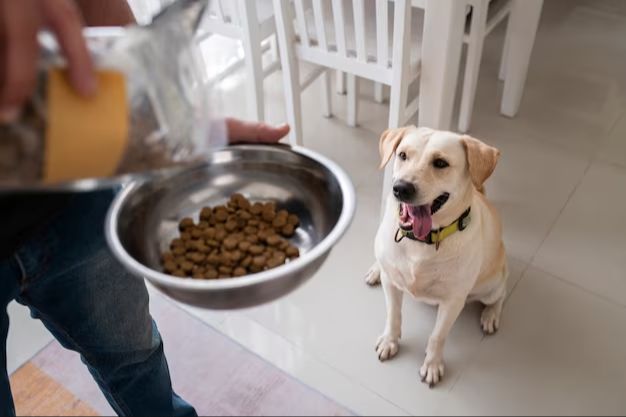Introduction
Cancer is unfortunately very common in dogs, just as it is in people. More than 1 in 3 dogs will develop cancer during their lifetime. Understanding the typical age when dogs develop cancer, what cancers they tend to get, and how to best prevent, screen for, diagnose, and treat cancer can help dog owners provide the best care for their canine companions.
In this article, we will provide an overview of the rates of cancer in dogs, what factors influence a dog’s risk, the typical age of diagnosis, how regular vet checks and screening can detect cancer early, the signs of cancer to watch for, how cancer is diagnosed, treatment options, prognosis, and steps you can take to lower your dog’s chances of getting cancer.
Cancer Rates in Dogs
Cancer is unfortunately very common in dogs. Approximately 1 in 4 dogs will develop cancer at some point in their lives. The most common cancers diagnosed in dogs are skin tumors, lymphoma, mast cell tumors, soft tissue sarcomas, and osteosarcoma (bone cancer).
The rates of cancer in dogs have been steadily increasing over the past few decades. Some of the factors contributing to this rise include increased exposure to carcinogens, environmental pollution, poor quality dog food, second-hand smoke, and dogs simply living longer than they used to.
Certain breeds of dogs are genetically predisposed to developing certain cancers. For example, Bernese Mountain Dogs have high rates of histiocytic sarcoma, Golden Retrievers have high rates of lymphoma and hemangiosarcoma, and Rottweilers are prone to develop osteosarcoma.
Risk Factors
There are certain factors that may put dogs at higher risk for developing cancer. One of the biggest risk factors is simply the size and breed of the dog.
Larger dog breeds tend to have higher rates of cancer compared to smaller breeds. This is likely because larger dogs have more cells in their bodies, which means more opportunities for errors during cell division that can lead to cancerous mutations. Some of the breeds with the highest rates of cancer include Great Danes, Irish Wolfhounds, Saint Bernards, and Rottweilers.
In addition to size, there are certain breeds that are genetically predisposed to specific types of cancer. For example, Golden Retrievers have high rates of lymphoma and hemangiosarcoma. Bernese Mountain Dogs and Flat-Coated Retrievers are prone to histiocytic sarcoma. Scottish Terriers have elevated rates of bladder cancer.
Knowing your dog’s size and breed can help determine their cancer risk and guide preventative screening or early detection efforts.
Average Age of Diagnosis
The average age at which dogs are diagnosed with cancer varies depending on the breed and the type of cancer. Larger breed dogs tend to develop cancer at a younger age, while smaller breeds tend to live longer before being diagnosed. However, some general trends emerge:
– For lymphoma, which is one of the most common cancers seen in dogs, the average age of diagnosis is between 6-9 years. Certain breeds like Boxers and Bullmastiffs tend to develop lymphoma at a younger age.

– For mast cell tumors, another very common cancer in dogs, the average age of diagnosis is around 9 years old.
– For osteosarcoma, an aggressive bone cancer, dogs are generally diagnosed between 8-10 years old, with larger breeds being affected at a younger age.
– For malignant melanoma, the average age of diagnosis is around 11 years old.
– For hemangiosarcoma, a type of cancer that affects blood vessels, the average age of diagnosis is 10-12 years old.
So in general, lymphoma, mast cell tumors, osteosarcoma and other common cancers in dogs tend to be diagnosed when dogs are middle-aged to older, between 6-12 years on average depending on the breed and cancer type. Larger breed dogs tend to be diagnosed at a younger age overall than smaller breeds.
Preventative Screening
There are several screening tests available that can detect cancer in dogs before they show any symptoms. The two most common are:
- Physical exam – A veterinarian carefully feels the entire body, including the lymph nodes, for any unusual lumps or bumps. This should be done at least annually.
- Blood tests – Bloodwork can often detect abnormalities that may indicate cancer. A CBC (complete blood count) and chemistry panel should be run as part of an annual wellness exam.
In addition, some breeds are prone to specific cancers that warrant extra screening:

- Boxers – Regular cardiac exams and chest x-rays to screen for boxers cardiomyopathy and lung tumors.
- Golden Retrievers – Annual screening for hemangiosarcoma with cardiac ultrasound and abdominal ultrasound.
The recommended age to start annual cancer screening in dogs is around 6 years old. However, early screening at 3-4 years old may be advised for breeds at high risk for developing cancer at a younger age. Catching cancer early greatly improves outcomes.
Signs of Cancer
There are several noticeable signs that could indicate your dog has cancer. Being aware of these changes is important, as early detection greatly improves treatment success.
One of the most common signs of cancer in dogs is a change in appetite. This may present as a decreased appetite, where your dog seems less interested in food than normal. However, some types of cancer can also increase appetite. If you notice any unusual fluctuations in your dog’s eating habits, discuss it with your vet.
Unusual lumps or bumps on your dog’s body are another potential indicator of cancer. Many cancers form tumorous growths that may be felt through the skin. Look out for any new lumps that continue to increase in size, as well as bumps that don’t heal. Check all over your dog’s body thoroughly and monitor symmetry. Any asymmetry could point to an internal tumor.

Difficulty breathing can also signal cancer, especially in the nose, throat, lungs or chest. Labored breathing, wheezing, coughing and loss of stamina during exercise are all causes for concern. If your dog seems to be struggling to get enough air, get them checked by a vet right away.
Diagnosis
If a veterinarian suspects cancer, they will perform diagnostic tests to confirm the diagnosis. The main diagnostic tools include:
Physical Exam
The veterinarian will thoroughly examine the dog for any lumps, bumps, or abnormal findings that may indicate cancer. They will check the size, shape, firmness, and location of any suspicious masses or growths. Enlarged lymph nodes may also point to cancer.
Biopsy
A biopsy involves removing a small sample of cells or tissues for examination under a microscope. This allows the veterinarian to determine whether cancer is present and identify the type of cancer cells. Fine needle aspiration or surgical biopsies may be performed.
Imaging Tests
Imaging tests like x-rays, CT scans, MRIs, or ultrasound can reveal tumors or abnormalities in the body. They allow the veterinarian to evaluate the size, shape, and location of any masses or growths. Imaging tests also help determine if cancer has metastasized or spread to other areas of the body.
Treatment
There are several treatments available for canine cancer, with the most common being surgery, chemotherapy, and radiation therapy. The treatment plan will depend on the type and stage of cancer, as well as the dog’s overall health.
Surgery
Surgery is often the first line of treatment and the most effective for removing solid tumors, such as those found in the skin, muscle, or bone. The goal is to fully remove the cancerous tissue with clean margins to help prevent recurrence. With cancers like osteosarcoma (bone cancer), amputation of the affected limb is usually necessary.
Chemotherapy
Chemotherapy uses anti-cancer drugs to target and destroy cancer cells. It may be used before surgery to shrink tumors or after surgery to kill any remaining cancer cells. Chemotherapy is also used for cancers that are unlikely to be cured through surgery alone, like lymphoma or metastatic tumors that have spread to other areas of the body. The drugs are administered orally, intravenously, or directly into the tumor.
Radiation
Radiation therapy uses high-energy radiation to shrink and destroy tumors. It works by damaging cancer cell DNA and inhibiting their ability to multiply. Radiation may be used alongside surgery or chemotherapy, or as the main treatment for inoperable tumors. Dogs receive short daily radiation sessions over several weeks under sedation or anesthesia. Radiation side effects depend on the area being treated but can include skin irritation, hair loss, and fatigue.
Prognosis
The prognosis for dogs diagnosed with cancer depends significantly on the type and stage of cancer at the time of diagnosis. Some cancers, especially if caught early, are very treatable in dogs. Other types of canine cancers have a more guarded prognosis.
In general, the earlier cancer is diagnosed and treated, the better the prognosis. Cancers that have not yet metastasized have a much higher treatability rate. For cancers that have already spread to other parts of the body, treatment is more difficult and survival time is reduced.
A dog’s age at the time of diagnosis also impacts the prognosis. Younger dogs tend to tolerate cancer treatments better and have a higher rate of remission. Older dogs may struggle with the side effects of chemotherapy and radiation therapy, lowering their chance for long-term survival.
For some of the most common cancers in dogs like lymphoma and osteosarcoma, survival times of 6 months to 2 years or more are possible with aggressive treatment. Other cancer types like hemangiosarcoma and advanced malignant melanoma tend to have more guarded prognoses even with treatment.
Working closely with your veterinarian and veterinary oncologist, having a full understanding of your dog’s cancer diagnosis and options, and providing supportive care alongside treatment can help extend and improve your dog’s quality of life after a cancer diagnosis.
Prevention
There are several steps dog owners can take to help prevent cancer in their pets:

Routine vet visits – Annual visits to the veterinarian for a full exam and bloodwork can help detect cancers early when they are most treatable. Your vet may recommend screening tests like radiographs or ultrasound for certain breeds at higher risk.
Healthy diet – Feeding your dog a high-quality commercial dog food formulated for their life stage and activity level can help avoid obesity and provide optimal nutrition. Avoiding table scraps and foods with artificial preservatives is also recommended.
Limit exposure to carcinogens – Reducing your dog’s contact with known carcinogens like tobacco smoke, ash, and pesticides may lower their risk. Avoiding excessive sun exposure, especially for light-colored dogs prone to solar radiation damage, is also advised.
Implementing preventative care, diet, and lifestyle adjustments can go a long way towards reducing your dog’s chances of developing cancer.